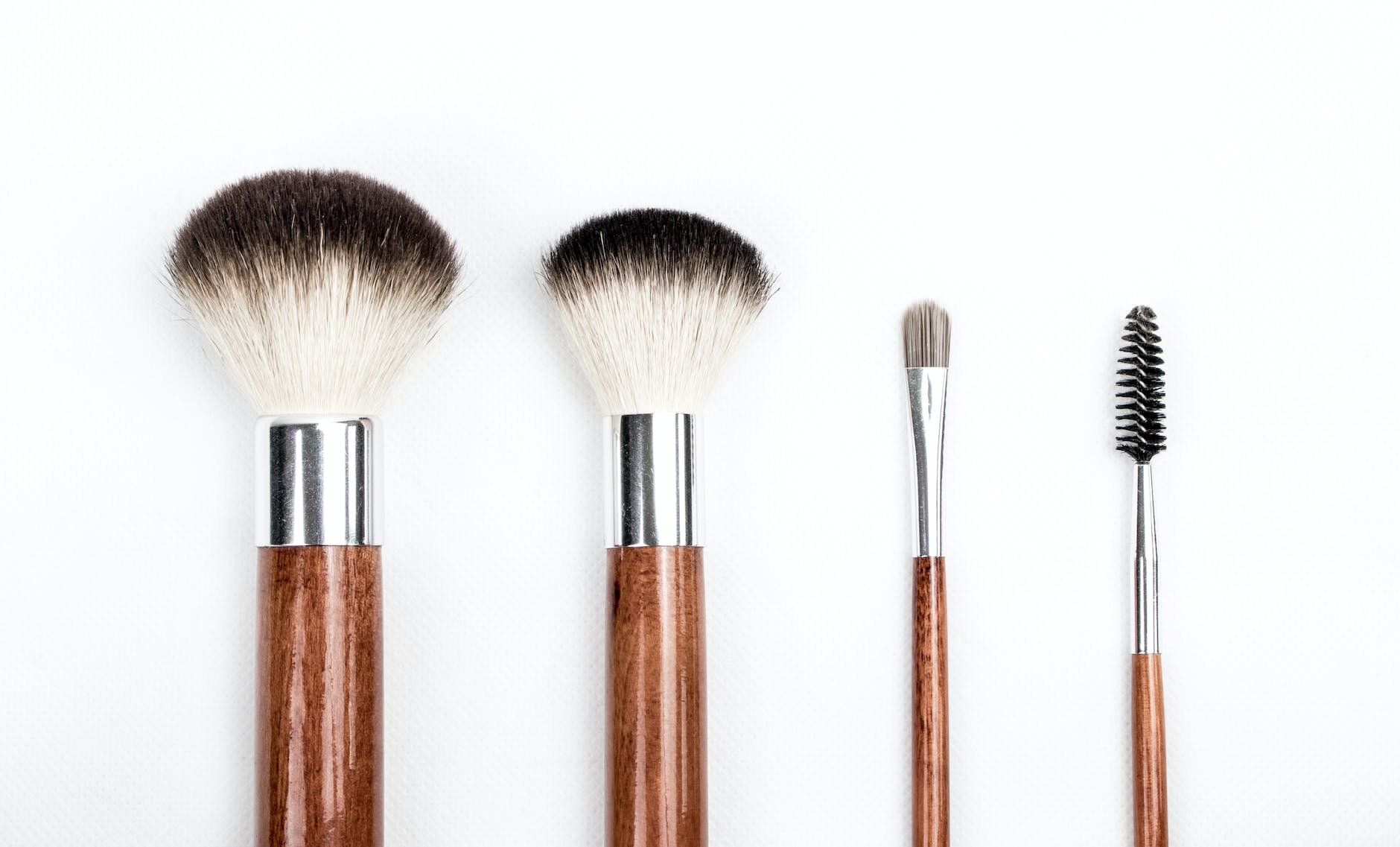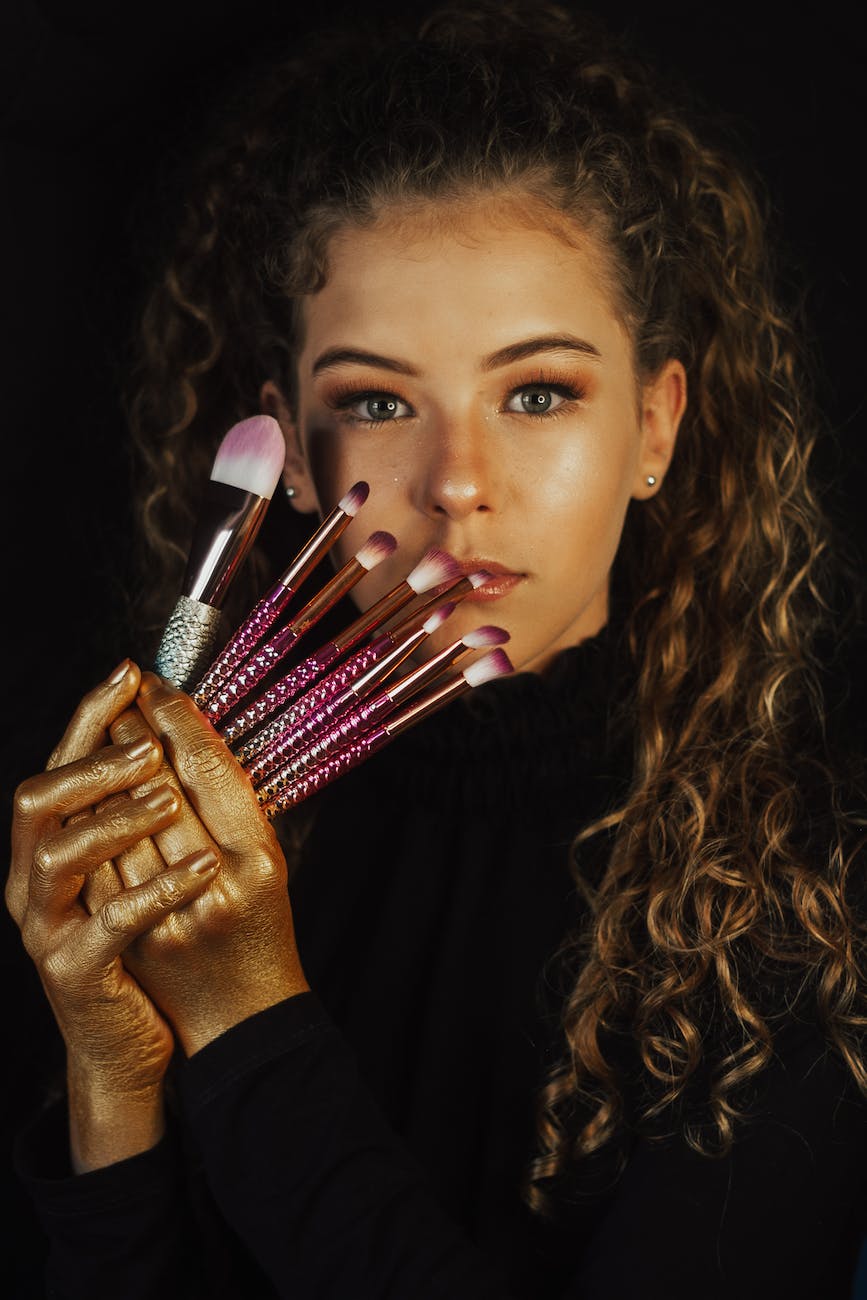
Makeup brushes may quickly create a breeding ground for bacteria (germs) that can hurt your skin, with makeup residue, oil, and dirt providing the ideal habitat for bacteria to grow.
To maintain cleanliness and hygiene, it is advisable to clean your makeup brushes every seven to 10 days. Learn the proper technique with our guide on “How to Clean Makeup Brushes.”
What Is the Correct Method for How to Clean Makeup Brushes?
Using the proper methods to clean makeup brushes will help prevent your skin from acne, skin irritations, and infections.
Here’s a step-by-step guide to efficiently cleaning your makeup brushes:
Rinsing: The first step in cleaning a makeup brush is to rinse it. Using lukewarm running water, rinse only the tips of your makeup brushes. This will aid in the removal of any remaining makeup. Avoid getting the entire brush head wet, since the tepid water may dissolve the glue that binds the handle and brush head together.

Shampoo the brush: You can use either clarifying shampoo or mild shampoo for this stage. In a bowl of lukewarm water, put a spoonful of one of the two shampoos. If you use soap on your brushes, the bristles may dry out.
Massage and swirl: Swirl the tips of your brushes in the liquid after mixing the shampoo and water. To make extra lather, rub the brush tips in the palm of your hand.
Rinse: Rinse the tips of your brushes again with running water.
Repeat the procedure: Repeat the shampooing and rinsing process until the water pouring from the brush becomes clear. That indicates that your brushes are free of makeup residue.
Squeeze the water out: After ensuring that your brushes are clean, use clean, dry paper towels to squeeze out any excess water from the bristles.
Dry the brushes: Lay your brushes flat on a dry towel once they’ve dried from squeezing. Make sure the brush tips are dangling over the edge and not erect. Placing the brushes upright may allow water to run down the bristles, loosening the adhesive.
How long does it take to dry makeup brushes? Usually, a day or two. You may also leave them out overnight to dry. Don’t be concerned if your makeup brushes feel stiff after washing. Apply conditioner to the bristles and rinse with water to resolve this issue. After that, lay them flat to dry. This may aid in softening the bristles.
What to Use to Clean Makeup Brushes
You can clean your makeup brushes with a number of basic home items. Among them are the following:
Liquid dish soap: Makeup product residue that has already caked can be effectively removed with liquid dish soap. Wipe your brushes with a soapy sponge after applying dish soap on it. Rinse the brush with warm water, pat it dry with a towel, then lay it flat to dry.

Vinegar and lemon: A mixture of vinegar and lemon works well as a disinfectant. It kills bacteria effectively and leaves your brushes with a lovely odor after cleaning. Pour two teaspoons of white vinegar into a cup of hot water to clean with. Rinse the tip of your brush with lukewarm water after washing it in the mixture. Then, cut open a lemon and rub it with the brush to eliminate the vinegar scent. Apple cider vinegar is another fantastic option to pair with lemon.
Baby shampoo: Baby shampoo is excellent for cleaning makeup brushes. It’s also kind to the bristles. Swirl a drop of baby shampoo into lukewarm water with your makeup brushes. With your fingertips, massage the bristles. The brush should then be rinsed with water and let flat to dry.
How Frequently Should You Clean Your Makeup Brushes?
The frequency with which you should clean your makeup brushes is determined on the sort of makeup you wear. If you use a brush to apply wet products or makeup that contains liquid components (such as concealer and foundation), you may need to clean it more frequently. Wash this brush at least once every week. This may be sufficient to get rid of the product. It may also improve the efficiency and effectiveness of the brushwork.
When it comes to brushes used near your eyes, they should be cleaned every two weeks. This also applies to brushes used to apply dry cosmetics (such as eyeshadow and eyeliner). This is because your eyes are more susceptible to infection than your skin.
The brushes you use to apply dry products like powder to your skin only need to be washed once a month.
Remember to keep an eye out for other items, such as sponges, that you may be utilizing with liquid goods. They absorb moisture and cosmetics just like any other sponge. If you do not maintain the sponge clean, yeast and germs may form on your skin. Most makeup producers use preservatives to prevent this from happening; but, if makeup accumulates for several months, you may acquire an infection if you cut your skin.
Conclusion
Using a dirty makeup brush can cause skin infections, allergic reactions, and acne, all of which can be avoided with a simple wash every now and again. Avoid sharing cosmetic brushes with others, and always wash the ones you use frequently. If you are having skin problems or infections and suspect that your brush is the source, get expert assistance. Consult with a dermatologist (skin doctor).
If you discover that your brushes are worn out or have lost their form, consider throwing them away and purchasing new ones. It might not be worth it to keep them around if they are inefficient.







[…] hair have become an obsession, and for good cause. It’s more than simply adding a splash of color; it’s a calculated move to increase volume and redefine thin hair strands. I went down the […]
[…] or pain, use a delicate and gentle applicator. Look for alternatives with gentle and fine-tip brushes that prioritize sensitivity over standard eyeliners with harsh or stiff […]
[…] Curved vs. Straight Brushes […]
Comments are closed.